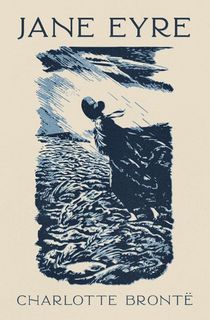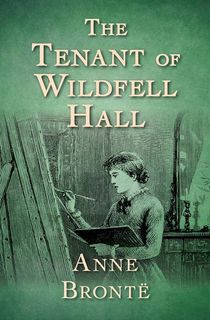Adapting literary classics is no easy feat for any director, and sometimes cuts have to be made for the sake of time, budget, and style. The nineteenth-century powerhouse trio of sisters Charlotte, Emily, and Anne Brontë, writing at a time where long novels were primary forms of entertainment, penned lengthy, highly intricate novels that weaved domestic drama and extensive worldbuilding for their hungry readership.
In the following centuries, various film and TV adaptations of their books have, at times, excluded minor elements of their storytelling that change the tone and meanings of their work to fit a new medium or agenda. These are three subplots from the Brontë sisters’ original novels that carry significance in the books, but were left on the sidelines when the time came to depict the stories on screen.
1. Mr. Lockwood and Nelly the Narrator in Wuthering Heights.
Emily Brontë’s 1847 novel Wuthering Heights is structured like a folk tale. Mr. Lockwood, a common man who has moved to rural Yorkshire in search of a peaceful life, is instead treated to not only a traumatic ghostly encounter but also a nefarious tale of tragic love and betrayal by Ellen “Nelly” Dean, a weary housekeeper who has seen far more in her lifetime than any human being should.
When choosing the style of this frame narrative, Emily Brontë was possibly inspired by the precedent set by the ancestor of contemporary Gothic fiction, Mary Shelley, in her 1818 novel Frankenstein. It is well-known that Brontë’s father, the progressively minded Reverend Patrick Brontë, allowed his children unlimited access to literature, and that Emily Brontë was an admirer and disciple of the poet Lord Byron. The theory of Emily Brontë drawing influence from Byron’s equally dynamic friend Mary Shelley as well is not entirely implausible.
Yet despite Brontë’s carefully constructed plotline, modern film and TV adaptations of Wuthering Heights have chosen to omit the character of Mr. Lockwood and Nelly’s role as the narrator altogether. The 2009 miniseries (directed by Coky Giedroyc) does not include it, nor does the 2011 film version (directed by Andrea Arnold).
The most likely reason is that both elements would distract from the story of Wuthering Height’s greatest attraction: the doomed, destructive romance between Heathcliff and Catherine. However, die-hard fans of the book looking for more faithful adaptations may be disappointed to see the formidable Nelly’s role regulated to that of an extra. Even the Mr. Lockwood subplot has its purpose: Mr. Lockwood is meant to stand in as an ordinary person, just like the unsuspecting reader, in shock and awe of the treacherous, supernatural underworld Emily Brontë has fabricated in the seemingly quiet English countryside.
2. Things Get Better at Lowood School in Jane Eyre.
In Charlotte Brontë’s 1847 Jane Eyre, Brontë chose to base the title character’s abusive boarding school Lowood School off her own real-life childhood educational institution, the Clergyman Daughters’ School, and did not hold back in depicting its horrors in grisly detail. Lowood School’s poor meals, ghastly living conditions, and an authoritarian, unforgiving regime whisk away the lives of little girls not strong enough to endure it all, including Jane Eyre’s only childhood friend, Helen Burns.
However—and this is perhaps some wishful fantasy thinking on behalf of the author—Lowood School does undergo several positive reforms following an outbreak of typhus that brings the school to the attention of the local philanthropists. A new committee is formed, the tyrannical director Mr. Brocklehurst is demoted from his place of power, and the food and the accommodations improve for both the teachers and the students. All of this contributes to Jane Eyre’s successful survival of her childhood, despite being characterized as a small, sickly, and unruly child. With her needs met, she focuses on her studies and grows up to be an intelligent and well-spoken teacher.
This optismistic subplot is rarely addressed in adaptations of Jane Eyre, and it is especially ignored in the more modern ones. In both the 2006 TV mini-series (directed by Susanne White) and in the 2011 film (Cary Joji Fukunaga), Lowood School is painted as a nightmare that Jane Eyre makes a narrow lucky escape from, rather than a school and work environment that is on the mend.
Perhaps these directors decided that it would be hard to justify Jane Eyre’s choice to leave Lowood School for a new employment offer at Thornfield Hall when Lowood was already transitioning into a better workplace for her. Readers of the book will understand and sympathize with Jane Eyre’s thought process more easily. Even though Lowood School was now a more livable place, she was still desperate for a life change, and through her resourcefulness and cleverness, she obtains it.

Jane Eyre
3. Lord Lowborough, the Other Forsaken Spouse in The Tenant of Wildfell Hall.
Anne Brontë, observant, practical, and astute, had a lot to say about the sacrament of marriage in her time period, and she said it all in her famously bold 1848 novel The Tenant of Wildfell Hall. Written in an era where a women’s subservience in her marriage, however unbearable her husband may be, was an unargued expectation, Brontë defiantly invented the character of Helen Graham.
Graham, with her impressionable young son and loyal servant in tow, flees from her abusive, unfaithful, and alcoholic husband Arthur Huntingdon, a character Anne Brontë is known to have based on her own volatile addict brother, Branwell Brontë. Bramwell, in his lifetime, was also an undesirable, unreliable spouse and was rejected as a potential partner by the woman he loved. Huntingdon, in the novel, displays the worst qualities of the only male Brontë sibling.
But in the novel, Huntingdon isn’t Bramwell’s only representative. Another unfavorable pen portrait appears in the form of Lord Lowborough, the suffering husband of Huntingdon’s mistress Annabella Wilmot. Deeply in love with his wife and despaired by her betrayal, Lowborough turns to substance abuse and, like Helen Graham, seeks a legal escape route from his marriage.
Here Anne Brontë was really trying to make a point: England’s strict marriage laws could trap anyone in a state of misery, not just the women, and Annabella Wilmot and Lord Lowborough’s crumbling union serves as a tragic contrast and an effective starting point for a discussion on toxic, exploitative, and socially sanctioned relationships in the nineteenth-century. The 1996 TV series (directed by Mike Barker) chooses to forgo this subplot and focus more exclusively on Helen and Arthur’s strife.
Featured image via Loren Cutler / Unsplash


